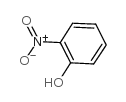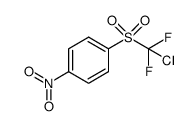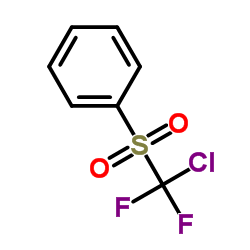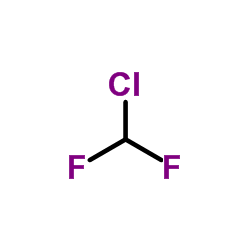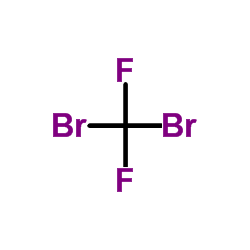22225-77-0
| Name | 1-(difluoromethoxy)-2-nitrobenzene |
|---|---|
| Synonyms |
2-(3-METHYL-PIPERAZIN-1-YL)-NICOTINIC ACID
2-(difluoromethoxy)-nitrobenzene α,α-Difluoro-2-nitroanisole Difluoromethyl 2-nitrophenyl ether α,α-Difluoro-o-nitroanisole 1-Nitro-2-difluormethoxy-benzol 1-(Difluoromethoxy)-2-nitrobenzene 1-difluoromethoxy-2-nitrobenzene Benzene, 1-(difluoromethoxy)-2-nitro- 2-(difluoromethoxy)-1-nitrobenzene WNR BOYFF 2-(Difluoromethoxy)nitrobenzene 2-nitro(difluoromethoxy)benzene MFCD00221470 |
| Density | 1.4±0.1 g/cm3 |
|---|---|
| Boiling Point | 249.4±30.0 °C at 760 mmHg |
| Molecular Formula | C7H5F2NO3 |
| Molecular Weight | 189.116 |
| Flash Point | 104.6±24.6 °C |
| Exact Mass | 189.023743 |
| PSA | 55.05000 |
| LogP | 1.91 |
| Vapour Pressure | 0.0±0.5 mmHg at 25°C |
| Index of Refraction | 1.494 |
| Storage condition | 2-8°C |
Synonym: SECTION 2 - COMPOSITION, INFORMATION ON INGREDIENTS
Risk Phrases: 36/37/38 SECTION 3 - HAZARDS IDENTIFICATION EMERGENCY OVERVIEW Irritating to eyes, respiratory system and skin. Potential Health Effects Eye: Causes eye irritation. Skin:
Causes skin irritation. May be harmful if absorbed through the skin. Ingestion: May cause irritation of the digestive tract. May be harmful if swallowed. Inhalation: Causes respiratory tract irritation. May be harmful if inhaled. Chronic: Not available. SECTION 4 - FIRST AID MEASURES Eyes: Flush eyes with plenty of water for at least 15 minutes, occasionally lifting the upper and lower eyelids. Get medical aid. Skin: Get medical aid. Flush skin with plenty of water for at least 15 minutes while removing contaminated clothing and shoes. Ingestion: Get medical aid. Wash mouth out with water. Inhalation: Remove from exposure and move to fresh air immediately. If not breathing, give artificial respiration. If breathing is difficult, give oxygen. Get medical aid. Notes to Physician: Treat symptomatically and supportively. SECTION 5 - FIRE FIGHTING MEASURES General Information: As in any fire, wear a self-contained breathing apparatus in pressure-demand, MSHA/NIOSH (approved or equivalent), and full protective gear. Extinguishing Media: Use water spray, dry chemical, carbon dioxide, or chemical foam. SECTION 6 - ACCIDENTAL RELEASE MEASURES General Information: Use proper personal protective equipment as indicated in Section 8. Spills/Leaks: Absorb spill with inert material (e.g. vermiculite, sand or earth), then place in suitable container. SECTION 7 - HANDLING and STORAGE Handling: Avoid breathing dust, vapor, mist, or gas. Avoid contact with skin and eyes. Storage: Store in a cool, dry place. Store in a tightly closed container. SECTION 8 - EXPOSURE CONTROLS, PERSONAL PROTECTION Engineering Controls: Facilities storing or utilizing this material should be equipped with an eyewash facility and a safety shower. Use adequate ventilation to keep airborne concentrations low. Exposure Limits CAS# 22225-77-0: Personal Protective Equipment Eyes: Not available. Skin: Wear appropriate protective gloves to prevent skin exposure. Clothing: Wear appropriate protective clothing to prevent skin exposure. Respirators: Follow the OSHA respirator regulations found in 29 CFR 1910.134 or European Standard EN 149. Use a NIOSH/MSHA or European Standard EN 149 approved respirator if exposure limits are exceeded or if irritation or other symptoms are experienced. SECTION 9 - PHYSICAL AND CHEMICAL PROPERTIES Physical State: Liquid Color: colorless - pale yellow Odor: Not available. pH: Not available. Vapor Pressure: Not available. Viscosity: Not available. Boiling Point: 73 - 75 deg C @0.3mmHg Freezing/Melting Point: Not available. Autoignition Temperature: Not available. Flash Point: Not available. Explosion Limits, lower: Not available. Explosion Limits, upper: Not available. Decomposition Temperature: Solubility in water: Specific Gravity/Density: Molecular Formula: C7H5F2NO3 Molecular Weight: 189 SECTION 10 - STABILITY AND REACTIVITY Chemical Stability: Not available. Conditions to Avoid: Incompatible materials. Incompatibilities with Other Materials: Oxidizing agents, reducing agents, bases. Hazardous Decomposition Products: Nitrogen oxides, carbon monoxide, carbon dioxide, fluorine, hydrogen fluoride gas. Hazardous Polymerization: Has not been reported SECTION 11 - TOXICOLOGICAL INFORMATION RTECS#: CAS# 22225-77-0 unlisted. LD50/LC50: Not available. Carcinogenicity: 1-(Difluoromethoxy)-2-nitrobenzene - Not listed by ACGIH, IARC, or NTP. SECTION 12 - ECOLOGICAL INFORMATION SECTION 13 - DISPOSAL CONSIDERATIONS Dispose of in a manner consistent with federal, state, and local regulations. SECTION 14 - TRANSPORT INFORMATION IATA No information available. IMO No information available. RID/ADR No information available. SECTION 15 - REGULATORY INFORMATION European/International Regulations European Labeling in Accordance with EC Directives Hazard Symbols: XI Risk Phrases: R 36/37/38 Irritating to eyes, respiratory system and skin. Safety Phrases: S 26 In case of contact with eyes, rinse immediately with plenty of water and seek medical advice. S 37/39 Wear suitable gloves and eye/face protection. WGK (Water Danger/Protection) CAS# 22225-77-0: No information available. Canada None of the chemicals in this product are listed on the DSL/NDSL list. CAS# 22225-77-0 is not listed on Canada's Ingredient Disclosure List. US FEDERAL TSCA CAS# 22225-77-0 is not listed on the TSCA inventory. It is for research and development use only. SECTION 16 - ADDITIONAL INFORMATION MSDS Creation Date: 6/10/2003 Revision #0 Date: Original. The information above is believed to be accurate and represents the best information currently available to us. However, we make no warranty of merchantability or any other warranty, express or implied, with respect to such information, and we assume no liability resulting from its use. Users should make their own investigations to determine the suitability of the information for their particular purposes. In no way shall the company be liable for any claims, losses, or damages of any third party or for lost profits or any special, indirect, incidental, consequential or exemplary damages, howsoever arising, even if the company has been advised of the possibility of such damages. SECTION 16 - ADDITIONAL INFORMATION N/A |
| Hazard Codes | Xi: Irritant; |
|---|---|
| Risk Phrases | R20/21/22 |
| Safety Phrases | S23-S36/37/39 |
| HS Code | 2909309090 |
|
~98% 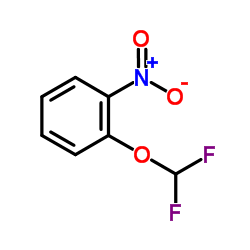
22225-77-0 |
| Literature: Wang, Fei; Li, Lingchun; Ni, Chuanfa; Hu, Jinbo Beilstein Journal of Organic Chemistry, 2014 , vol. 10, p. 344 - 351 |
|
~90% 
22225-77-0 |
| Literature: Wang, Fei; Zhang, Laijun; Zheng, Ji; Hu, Jinbo Journal of Fluorine Chemistry, 2011 , vol. 132, # 8 p. 521 - 528 |
|
~93% 
22225-77-0 |
| Literature: Zheng, Ji; Li, Ya; Zhang, Laijun; Hu, Jinbo; Meuzelaar, Gerrit Joost; Federsel, Hans-Juergen Chemical Communications, 2007 , # 48 p. 5149 - 5151 |
|
~% 
22225-77-0 |
| Literature: US5688795 A1, ; |
|
~81% 
22225-77-0 |
| Literature: Li, Lingchun; Wang, Fei; Ni, Chuanfa; Hu, Jinbo Angewandte Chemie - International Edition, 2013 , vol. 52, # 47 p. 12390 - 12394 Angew. Chem., 2013 , vol. 125, # 47 p. 12616 - 12620,5 |
|
~70% 
22225-77-0 |
| Literature: Xiao; Krishnan; Lin; Delos Santos; Kuck; Babine; Lang Jr. Journal of Pharmaceutical Sciences, 1989 , vol. 78, # 7 p. 585 - 588 |
|
~% 
22225-77-0 |
| Literature: Journal of Fluorine Chemistry, , vol. 59, # 2 p. 257 - 267 |
| Precursor 7 | |
|---|---|
| DownStream 1 | |
| HS Code | 2909309090 |
|---|---|
| Summary | 2909309090 other aromatic ethers and their halogenated, sulphonated, nitrated or nitrosated derivatives VAT:17.0% Tax rebate rate:9.0% Supervision conditions:none MFN tariff:5.5% General tariff:30.0% |

